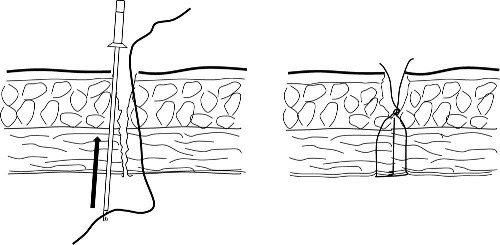The algorithm for evaluating a stab to the anterior abdomen includes a number of different techniques for evaluation. In some cases where the chance of entry into the abdomen is thought to be low probability, endoscopic exploration can be used. What if a full thickness stab is detected, but the surgeon is able confirm that no abdominal injuries are present? Should the stab defect be closed?
There is no good data that tells us the incidence of ventral hernia from stab wounds. We do know that 10mm endoscopic port sites and larger can be the source of a ventral hernia and possible bowel obstruction after laparoscopic surgery, so it stands to reason (but be careful) that the same thing could happen with larger stabs. So why not close them?
A number of commercial devices have been developed for port site closure during endoscopic surgery (Carter Thomason Closure System, Cooper Surgical; Endo Close, Covidien). A group in Tokyo published a description of the technique using the former device to close the fascial defect of a self-inflicted stab wound.

Bottom line: This is an interesting use for a device used for closing more controlled stab wounds (surgical port sites) in less controlled ones. It seems fair to extrapolate our current experience from laparoscopic surgery to trauma in this case. I would be very interested to hear from anyone who is currently using this technique.
Reference: A quick and easy closure technique for abdominal stab wound after diagnostic laparoscopy. J Trauma 72(5):1448-1449, 2012.
